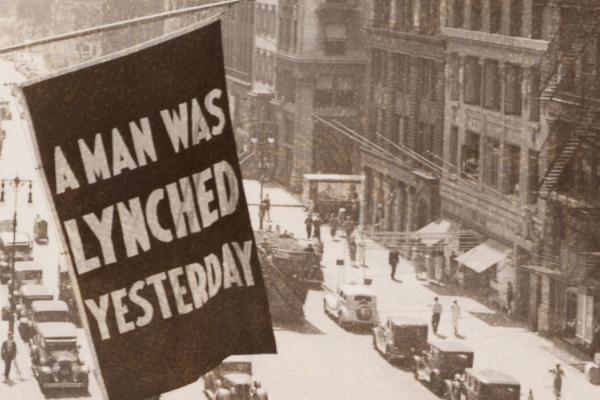THEY CAME TO the front and waited to speak with me. They were weeping.
The day before, I sat in the front seat of a packed car. Five beautiful black women, including one of the women now in tears, rolled toward Marion, Ind.—the site of the last public lynching in the North.
On the sweltering summer night of Aug. 7, 1930, three African-American teenagers—Thomas Shipp, Abram Smith, and James Cameron—sat huddled in their jail cells in Marion. Thousands of white men, women, and children gathered outside the jailhouse, screaming and jeering—demanding blood. The three were charged with the ultimate sin against whiteness—killing a white man and raping a white woman. They were dragged from the jailhouse, beaten, and strung up on a low-hanging tree branch a block away on the courthouse square, in the center of town. For some reason, Cameron was spared. The other two were not.
The town photographer captured the moment: The mob congregated like lions around mangled prey. Lips licked, satisfied grins splayed across the faces of young women and old women, young men and old men. Floral dresses, white shirts with buckled pants, and hats atop straight-backed heads covered bursting egos as they reveled in victory. One man pointed to their ritual sacrifice, and that moment became an iconic illustration of American lynching.
Read the Full Article

